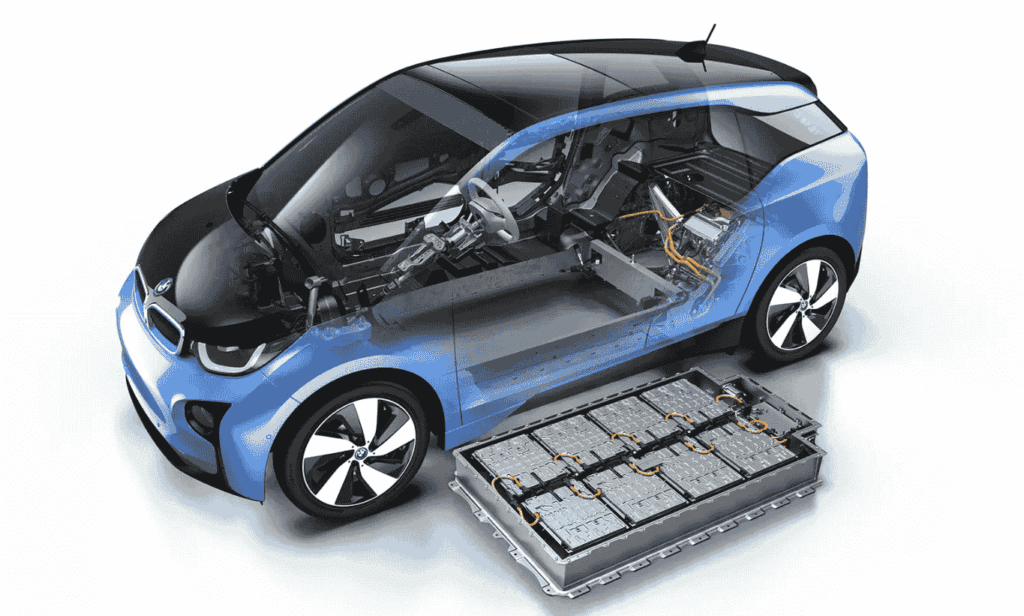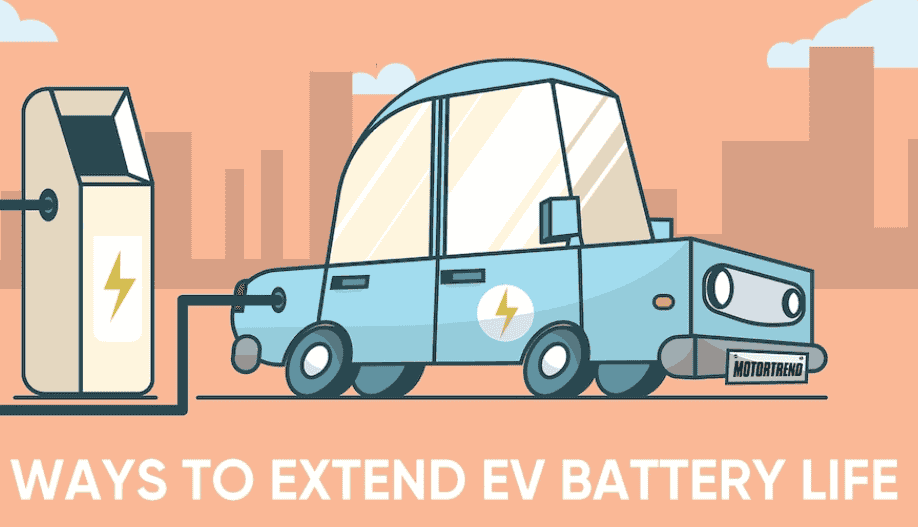What is electric car battery?
EV battery is the most important component in an electric car, or I can say in all-electric vehicles. The battery pack is cost more than 30% of the entire vehicle. Hence, being an EV enthusiast it’s more important to know about EV battery life.
Table of Contents
ToggleImportance of EV Battery life
The electric car battery life is a critical factor in the success of any electric vehicle. Because it directly affects the EV’s range, charging time, and resale value.
Unfortunately, it can’t to used forever because EV batteries are subject to degradation over time. This is a natural process. However certain factors will accelerate the process and reduce the EV battery life, which I will discuss in this blog.
Since it holds much value, there is a high demand for efficient battery chemistry and so much research is ongoing to increase the electric vehicle battery life, and range and reduce charging time. Also, read Future of Electric Vehicles in 2024.
Overview of Electric Vehicle Battery Life Expectations
As of 2024, most electric vehicle uses lithium-ion batteries. On average, the electric automaker claims a warranty of up to 8-12 years or 100000 – 150000 miles under normal use.
You know, there is a better alternative for lithium-ion batteries under research and development. EV Solid state batteries are expected to give a significant improvement in lifespan, range, etc. It will potentially double or triple that of the lithium-ion batteries.
Factors Affecting EV Battery life

I’m listing some of the major factors that will accelerate your EV battery degradation. Avoiding or preventing this condition is crucial for better EV battery life.
Environmental Conditions
Temperature
Extreme Temperatures both high and low will accelerate the battery degradation. The high temperature will lead to faster chemical reactions. Hence, increases the self-discharge.
The low temperature will reduce the EV’s battery capacity and performance. Also, a frequent fluctuation between hot and cold temperatures can strain the battery a lot.
Humidity and Moisture
Excess moisture will result in corrosion and can short circuit within the battery cells. This will surely reduce the performance and capacity of EV batteries.
Also, if one or more cells in the battery pack are affected by moisture, they may not charge or discharge at the same rate as the other healthy ones.
Hence, this will create an imbalance among the battery cells. These unhealthy battery cells put more load on healthy cells, affecting the overall performance of the battery.
EV Charging Practices
Slow Charging vs Fast Charging
General slow charging reduces the stress on the battery while charging. Because it prevents rapid temperature fluctuations, and high currents which may lead to a slightly longer electric car battery life compared to frequent fast charging.
Also, frequent fast charging may not offer better battery life. But it provides the advantage of less charging time compared to slow charging. However, due to the advancements in battery technology and charging infrastructure continuously improving, we will expect the potentially reduce the advantages of slow charging in the future.
Importance of avoiding deep discharges
When an EV battery is drained to near or complete capacity, it can significantly shorten the EV battery life. Also, repeated deep discharges will trigger irreversible chemical reactions within the battery cells.
It will cause permanent capacity loss and range reduction.
Driving Habits in Context of EV Battery ilfe
How acceleration and speed affect battery consumption
During the sudden and highly intense acceleration and driving at high speed, the electric motor draws more power from the battery pack. And certainly, puts more stress on the battery.
This creates more heat within the EVs. Extreme heat is the biggest factor in battery depletion.
The role of regenerative braking in preserving battery life
This feature is available in most electric cars. When an EV slows down or comes to a stop, the electric motor acts as a generator, converting kinetic energy into electrical energy. This generated electricity is then stored back into the battery, effectively recharging it.
Further, this technology will reduce battery wear and can increase EV battery life by reducing the strain on the battery.
Signs of Battery Degradation - Explained with Chart

Decreased Driving Range
The most common sign of EV battery degradation is a decrease in driving range. Because those batteries can’t store much energy, leading to a shorter range.
It is advisable to refer to the user manual to find out the original range for your EV model. If your EV isn’t giving the established range even after charging it full, then there is a high chance of a problem with the battery itself.
Longer Charging Times
Certainly, if the EV battery’s capacity and efficiency decline, it takes longer to charge fully.
You may also notice the increase in the temperature of batteries. This is because much of the electric energy is wasted in the form of heat without getting stored in the battery while charging.
Also, the charging process might pause or stop, as the EV battery struggles to handle the incoming charge.
Dashboard Warnings and Indicators
Understanding warning lights and messages
The modern electric vehicle has various warning lights and messages to alert the user to potential issues. Taking immediate action for those warnings will surely help to increase EV battery life.
Battery Related Warning
- Battery Warning Light: It indicates a problem with the battery system, such as a low charge or a fault.
- Battery Overheating or Undercooling warning: When the battery temperature exceeds the desired one or the issues with the battery colling functions. Always take this warning seriously, Extreme temperatures will significantly reduce the EV battery life, and also in the worst case explosion may occur.
Charging Related Warning
- Charging Errors: Indicates the problem with the charging process like faulty connection or charging station issues.
- Charging Cable fault: Suggesting a problem with the charging cable, It may be due the external damage or loss of connection.
Charging-related issues always negatively impact EV battery life if they are not addressed quickly.
Also note. Charger replacement cost is much lower than battery replacement.
Ways to Extend EV Battery Life

Regular Maintenance Practices | better Electric Vehicle Battery Life.
Keeping the software updated for battery management
Since EVs rely on software to manage their batteries efficiently, Regular software is a must to extend the electric vehicle battery life.
New software updates majorly include:
- Optimization in charging algorithms
- Enhancement in battery health monitoring system
- new safety features for battery protection
- Regenerative Braking Optimization
- Over-the-Air Updates (OTA)
Now, it is time for you to check your EV software updates. Don’t miss out on all these new or updated features. Those optimizations will help to extend EV battery life in the long run.
Optimal Charging Habits
Here I will list some of the important charging habits you must follow for better EV battery life.
- Always aim for partial charges like (20% – 80%). Never full charge or deep discharge.
- Use Fast charging only if it is required. As it puts more load on the battery
- Don’t charge your EVs in open sunlight, It may increase the temperature in the battery hence charging won’t take place effectively.
- When you are storing EVs for an extended period. Try to maintain the EV battery at 30-50% charge.
- Always ensure the charging cable isn’t damaged.
Utilizing Energy-Saving Features
Importance of Eco-Driving Mode
If your EV has an eco-driving mode, then don’t forget to use it.
Eco-driving mode adjusts the power delivery to the electric motor, promoting smoother driving.
It also limits acceleration, preventing excess energy consumption, promoting more battery efficiency, and enhancing the EV car battery life.
Those points are general, Some EV models do offer a wide range of features in eco-driving, you can check your EV specs for specific info.
FAQs
What is the typical lifespan of EV battery?
It will be around 8-10 years or 100,000 – 150,000 miles. But you the extend EV battery life by following my guide through this blog.
How can I tell if my EV battery is deteriorating?
Reduced range, longer charging, performance issues, or error messages.
What are common signs that my battery needs service?
Swelling, leaks, unusual noise, or error message. Regular inspection is needed for early detection.
What happens to EV batteries at the end of their life cycle?
It will be recycled, repurposed, or disposed.



![Read more about the article Why Electric Vehicles are Expensive? Let’s explore [2024]](https://evelectrichub.com/wp-content/uploads/2024/10/Electric-Car-Money-1-300x200.png)

